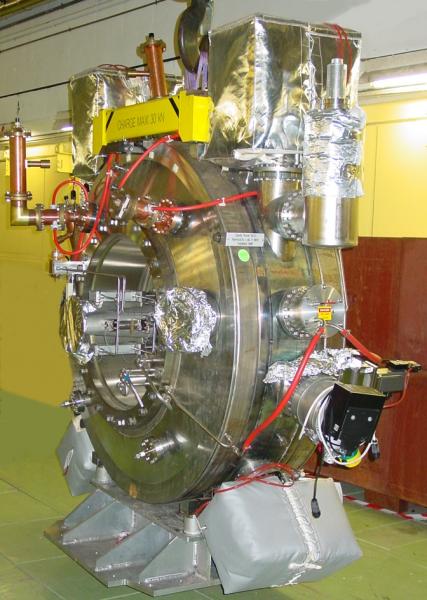As the particle beams travel through the chain of injectors from the source to the LHC, they periodically meet resonant accelerating cavities where they experience longitudinal electromagnetic fields of different frequencies and amplitudes, which provide them with an increase in energy and a particle bunch pattern.
The LIS Section is responsible for accelerating cavities in the linear accelerators (Linacs) and synchrotron accelerators located on the Meyrin site of CERN and of the high-power amplifiers and controls that are required for producing their electromagnetic fields.
It takes care of the first acceleration of bunches of ions out of the particle sources in Linac3 and Linac4. From there, beams of these ionized particle bunches are sent to the synchrotron accelerators where they are further accelerated and sent to various experiments. In the Linacs, the RF power systems operate at frequencies of 101, 202 and 352 MHz delivering up to a few hundred kilowatts of pulsed RF power. The section is also responsible for the RF operation of the REX-ISOLDE post-accelerator where various ion-species are accelerated.
The synchrotron systems concern the Proton Synchrotron Booster (PSB), the Proton Synchrotron (PS), the Antiproton Decelerator (AD) with ELENA, the Low Energy Ion Ring (LEIR), which are equipped with single gap cavities operating in a frequency range going from 0.3 to 200 MHz. Like in the linacs, solid-state transistors and vacuum tubes are the main components in the power amplifiers to provide the required RF power that feeds the resonant cavities with peak RF power ranging from 1 to 700 kW.
The LIS section is highly committed to the maintenance and operation of the existing RF high power systems in the Meyrin PS complex and deeply involved in the development work that is crucial to achieve the goals of the LHC Injector Upgrade (LIU) program: this concerns the Linac4 accelerating structures, the new cavities and amplification system for the PSB, upgraded amplifiers for the PS, longitudinal and transverse dampers in the PSB and PS.

